- Home
- H. P. Lovecraft
Lovecraft's Fiction Volume I, 1905-1925 Page 32
Lovecraft's Fiction Volume I, 1905-1925 Read online
Page 32
This fear of the basalt ruins and trap-doors was largely a matter of unspoken suggestion - or, at most, of furtive quasi-whispers. Everything specific which bore on it was significantly absent from such books as were on the common shelves. It was the one subject lying altogether under a taboo among the Great Race, and seemed to be connected alike with horrible bygone struggles, and with that future peril which would some day force the race to send its keener minds ahead en masse in time.
Imperfect and fragmentary as were the other things presented by dreams and legends, this matter was still more bafflingly shrouded. The vague old myths avoided it - or perhaps all allusions had for some reason been excised. And in the dreams of myself and others, the hints were peculiarly few. Members of the Great Race never intentionally referred to the matter, and what could be gleaned came only from some of the more sharply observant captive minds.
According to these scraps of information, the basis of the fear was a horrible elder race of half-polypous, utterly alien entities which had come through space from immeasurably distant universes and had dominated the earth and three other solar planets about 600 million years ago. They were only partly material - as we understand matter - and their type of consciousness and media of perception differed widely from those of terrestrial organisms. For example, their senses did not include that of sight; their mental world being a strange, non-visual pattern of impressions.
They were, however, sufficiently material to use implements of normal matter when in cosmic areas containing it; and they required housing - albeit of a peculiar kind. Though their senses could penetrate all material barriers, their substance could not; and certain forms of electrical energy could wholly destroy them. They had the power of aërial motion, despite the absence of wings or any other visible means of levitation. Their minds were of such texture that no exchange with them could be effected by the Great Race.
When these things had come to the earth they had built mighty basalt cities of windowless towers, and had preyed horribly upon the beings they found. Thus it was when the minds of the Great Race sped across the void from that obscure, trans-galactic world known in the disturbing and debatable Eltdown Shards as Yith.
The newcomers, with the instruments they created, had found it easy to subdue the predatory entities and drive them down to those caverns of inner earth which they had already joined to their abodes and begun to inhabit.
Then they had sealed the entrances and left them to their fate, afterward occupying most of their great cities and preserving certain important buildings for reasons connected more with superstition than with indifference, boldness, or scientific and historical zeal.
But as the aeons passed there came vague, evil signs that the elder things were growing strong and numerous in the inner world. There were sporadic irruptions of a particularly hideous character in certain small and remote cities of the Great Race, and in some of the deserted elder cities which the Great Race had not peopled - places where the paths to the gulfs below had not been properly sealed or guarded.
After that greater precautions were taken, and many of the paths were closed forever - though a few were left with sealed trap-doors for strategic use in fighting the elder things if ever they broke forth in unexpected places.
The irruptions of the elder things must have been shocking beyond all description, since they had permanently coloured the psychology of the Great Race. Such was the fixed mood of horror that the very aspect of the creatures was left unmentioned. At no time was I able to gain a clear hint of what they looked like.
There were veiled suggestions of a monstrous plasticity, and of temporary lapses of visibility, while other fragmentary whispers referred to their control and military use of great winds. Singular whistling noises, and colossal footprints made up of five circular toe marks, seemed also to be associated with them.
It was evident that the coming doom so desperately feared by the Great Race - the doom that was one day to send millions of keen minds across the chasm of time to strange bodies in the safer future - had to do with a final successful irruption of the elder beings.
Mental projections down the ages had clearly foretold such a horror, and the Great Race had resolved that none who could escape should face it. That the foray would be a matter of vengeance, rather than an attempt to reoccupy the outer world, they knew from the planet's later history - for their projections shewed the coming and going of subsequent races untroubled by the monstrous entities.
Perhaps these entities had come to prefer earth's inner abysses to the variable, storm-ravaged surface, since light meant nothing to them. Perhaps, too, they were slowly weakening with the aeons. Indeed, it was known that they would be quite dead in the time of the post-human beetle race which the fleeing minds would tenant.
Meanwhile, the Great Race maintained its cautious vigilance, with potent weapons ceaselessly ready despite the horrified banishing of the subject from common speech and visible records. And always the shadow of nameless fear hung bout the sealed trap-doors and the dark, windowless elder towers.
V
That is the world of which my dreams brought me dim, scattered echoes every night. I cannot hope to give any true idea of the horror and dread contained in such echoes, for it was upon a wholly intangible quality - the sharp sense of pseudo-memory - that such feelings mainly depended.
As I have said, my studies gradually gave me a defence against these feelings in the form of rational psychological explanations; and this saving influence was augmented by the subtle touch of accustomedness which comes with the passage of time. Yet in spite of everything the vague, creeping terror would return momentarily now and then. It did not, however, engulf me as it had before; and after 1922 I lived a very normal life of work and recreation.
In the course of years I began to feel that my experience - together with the kindred cases and the related folklore - ought to be definitely summarised and published for the benefit of serious students; hence I prepared a series of articles briefly covering the whole ground and illustrated with crude sketches of some of the shapes, scenes, decorative motifs, and hieroglyphs remembered from the dreams.
These appeared at various times during 1928 and 1929 in the Journal of the American Psychological Society, but did not attract much attention. Meanwhile I continued to record my dreams with the minutest care, even though the growing stack of reports attained troublesomely vast proportions. On July 10, 1934, there was forwarded to me by the Psychological Society the letter which opened the culminating and most horrible phase of the whole mad ordeal. It was postmarked Pilbarra, Western Australia, and bore the signature of one whom I found, upon inquiry, to be a mining engineer of considerable prominence. Enclosed were some very curious snapshots. I will reproduce the text in its entirety, and no reader can fail to understand how tremendous an effect it and the photographs had upon me.
I was, for a time, almost stunned and incredulous; for although I had often thought that some basis of fact must underlie certain phases of the legends which had coloured my dreams, I was none the less unprepared for anything like a tangible survival from a lost world remote beyond all imagination. Most devastating of all were the photographs - for here, in cold, incontrovertible realism, there stood out against a background of sand certain worn-down, water-ridged, storm-weathered blocks of stone whose slightly convex tops and slightly concave bottoms told their own story.
And when I studied them with a magnifying glass I could see all too plainly, amidst the batterrings and pittings, the traces of those vast curvilinear designs and occasional hieroglyphs whose significance had become so hideous to me. But here is the letter, which speaks for itself.
49, Dampier St.,
Pilbarra, W. Australia,
May 18, 1934.
Prof. N. W Peaslee,
c/o Am. Psychological Society,
30 E. 41st St.,
New York City, U.S.A.
My Dear Sir:
A recent conversation with Dr. E.
M. Boyle of Perth, and some papers with your articles which he has just sent me, make it advisable for me to tell you about certain things I have seen in the Great Sandy Desert east of our gold field here. It would seem, in view of the peculiar legends about old cities with huge stonework and strange designs and hieroglyphs which you describe, that I have come upon something very important.
The blackfellows have always been full of talk about "great stones with marks on them," and seem to have a terrible fear of such things. They connect them in some way with their common racial legends about Buddai, the gigantic old man who lies asleep for ages underground with his head on his arm, and who will some day awake and eat up the world.
There are some very old and half-forgotten tales of enormous underground huts of great stones, where passages lead down and down, and where horrible things have happened. The blackfellows claim that once some warriors, fleeing in battle, went down into one and never came back, but that frightful winds began to blow from the place soon after they went down. However, there usually isn't much in what these natives say.
But what I have to tell is more than this. Two years ago, when I was prospecting about 500 miles east in the desert, I came on a lot of queer pieces of dressed stone perhaps 3 X 2 X 2 feet in size, and weathered and pitted to the very limit.
At first I couldn't find any of the marks the blackfellows told about, but when I looked close enough I could make out some deeply carved lines in spite of the weathering. There were peculiar curves, just like what the blackfellows had tried to describe. I imagine there must have been thirty or forty blocks, some nearly buried in the sand, and all within a circle perhaps a quarter of a mile in diameter.
When I saw some, I looked around closely for more, and made a careful reckoning of the place with my instruments. I also took pictures of ten or twelve of the most typical blocks, and will enclose the prints for you to see.
I turned my information and pictures over to the government at Perth, but they have done nothing about them.
Then I met Dr. Boyle, who had read your articles in the Joumal of the American Psychological Society, and, in time, happened to mention the stones. He was enormously interested, and became quite excited when I shewed him my snapshots, saying that the stones and the markings were just like those of the masonry you had dreamed about and seen described in legends.
He meant to write you, but was delayed. Meanwhile, he sent me most of the magazines with your articles, and I saw at once, from your drawings and descriptions, that my stones are certainly the kind you mean. You can appreciate this from the enclosed prints. Later on you will hear directly from Dr. Boyle.
Now I can understand how important all this will be to you. Without question we are faced with the remains of an unknown civilization older than any dreamed of before, and forming a basis for your legends.
As a mining engineer, I have some knowledge of geology, and can tell you that these blocks are so ancient they frighten me. They are mostly sandstone and granite, though one is almost certainly made of a queer sort of cement or concrete.
They bear evidence of water action, as if this part of the world had been submerged and come up again after long ages - all since those blocks were made and used. It is a matter of hundreds of thousands of years - or heaven knows how much more. I don't like to think about it.
In view of your previous diligent work in tracking down the legends and everything connected with them, I cannot doubt but that you will want to lead an expedition to the desert and make some archaeological excavations. Both Dr. Boyle and I are prepared to cooperate in such work if you - or organizations known to you - can furnish the funds.
I can get together a dozen miners for the heavy digging - the blackfellows would be of no use, for I've found that they have an almost maniacal fear of this particular spot. Boyle and I are saying nothing to others, for you very obviously ought to have precedence in any discoveries or credit.
The place can be reached from Pilbarra in about four days by motor tractor - which we'd need for our apparatus. It is somewhat west and south of Warburton's path of 1873, and 100 miles southeast of Joanna Spring. We could float things up the De Grey River instead of starting from Pilbarra - but all that can be talked over later.
Roughly the stones lie at a point about 22° 3' 14" South Latitude, 125° 0' 39" East Longitude. The climate is tropical, and the desert conditions are trying.
I shall welcome further correspondence upon this subject, and am keenly eager to assist in any plan you may devise. After studying your articles I am deeply impressed with the profound significance of the whole matter. Dr. Boyle will write later. When rapid communication is needed, a cable to Perth can be relayed by wireless.
Hoping profoundly for an early message,
Believe me,
Most faithfully yours,
Robert B.F. Mackenzie
Of the immediate aftermath of this letter, much can be learned from the press. My good fortune in securing the backing of Miskatonic University was great, and both Mr. Mackenzie and Dr. Boyle proved invaluable in arranging matters at the Australian end. We were not too specific with the public about our objects, since the whole matter would have lent itself unpleasantly to sensational and jocose treatment by the cheaper newspapers. As a result, printed reports were sparing; but enough appeared to tell of our quest for reported Australian ruins and to chronicle our various preparatory steps.
Professor William Dyer of the college's geology department - leader of the Miskatonic Antarctic Expedition Of 1930-31 - Ferdinand C. Ashley of the department of ancient history, and Tyler M. Freeborn of the department of anthropology - together with my son Wingate - accompanied me.
My correspondent, Mackenzie, came to Arkham early in 1935 and assisted in our final preparations. He proved to be a tremendously competent and affable man of about fifty, admirably well-read, and deeply familiar with all the conditions of Australian travel.
He had tractors waiting at Pilbarra, and we chartered a tramp steamer sufficiently small to get up the river to that point. We were prepared to excavate in the most careful and scientific fashion, sifting every particle of sand, and disturbing nothing which might seem to be in or near its original situation.
Sailing from Boston aboard the wheezy Lexington on March 28, 1935, we had a leisurely trip across the Atlantic and Mediterranean, through the Suez Canal, down the Red Sea, and across the Indian Ocean to our goal. I need not tell how the sight of the low, sandy West Australian coast depressed me, and how I detested the crude mining town and dreary gold fields where the tractors were given their last loads.
Dr. Boyle, who met us, proved to be elderly, pleasant, and intelligent - and his knowledge of psychology led him into many long discussions with my son and me.
Discomfort and expectancy were oddly mingled in most of us when at length our party of eighteen rattled forth over the arid leagues of sand and rock. On Friday, May 31st, we forded a branch of the De Grey and entered the realm of utter desolation. A certain positive terror grew on me as we advanced to this actual site of the elder world behind the legends - a terror, of course, abetted by the fact that my disturbing dreams and pseudo-memories still beset me with unabated force.
It was on Monday, June 3rd, that we saw the first of the half-buried blocks. I cannot describe the emotions with which I actually touched - in objective reality - a fragment of Cyclopean masonry in every respect like the blocks in the walls of my dream-buildings. There was a distinct trace of carving - and my hands trembled as I recognised part of a curvilinear decorative scheme made hellish to me through years of tormenting nightmare and baffling research.
A month of digging brought a total of some 1250 blocks in varying stages of wear and disintegration. Most of these were carven megaliths with curved tops and bottoms. A minority were smaller, flatter, plain-surfaced, and square or octagonally cut-like those of the floors and pavements in my dreams - while a few were singularly massive and curved or slanted in such a manner as to suggest use in
vaulting or groining, or as parts of arches or round window casings.
The deeper - and the farther north and east - we dug, the more blocks we found; though we still failed to discover any trace of arrangement among them. Professor Dyer was appalled at the measureless age of the fragments, and Freeborn found traces of symbols which fitted darkly into certain Papuan and Polynesian legends of infinite antiquity. The condition and scattering of the blocks told mutely of vertiginous cycles of time and geologic upheavals of cosmic savagery.
We had an aëroplane with us, and my son Wingate would often go up to different heights and scan the sand-and-rock waste for signs of dim, large-scale outlines - either differences of level or trails of scattered blocks. His results were virtually negative; for whenever he would one day think he had glimpsed some significant trend, he would on his next trip find the impression replaced by another equally insubstantial - a result of the shifting, wind-blown sand.
One or two of these ephemeral suggestions, though, affected me queerly and disagreeably. They seemed, after a fashion, to dovetail horribly with something I had dreamed or read, but which I could no longer remember. There was a terrible familiarity about them - which somehow made me look furtively and apprehensively over the abominable, sterile terrain toward the north and northeast.
Around the first week in July I developed an unaccountable set of mixed emotions about that general northeasterly region. There was horror, and there was curiosity - but more than that, there was a persistent and perplexing illusion of memory.
I tried all sorts of psychological expedients to get these notions out of my head, but met with no success. Sleeplessness also gained upon me, but I almost welcomed this because of the resultant shortening of my dream-periods. I acquired the habit of taking long, lone walks in the desert late at night-usually to the north or northeast, whither the sum of my strange new impulses seemed subtly to pull me.

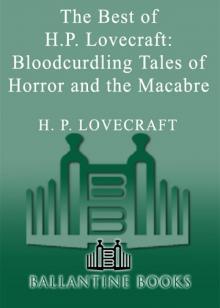 The Best of H.P. Lovecraft
The Best of H.P. Lovecraft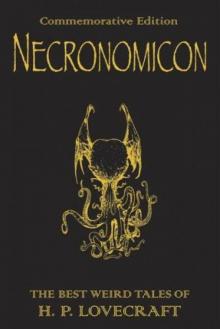 The Definitive H.P. Lovecraft: 67 Tales Of Horror In One Volume
The Definitive H.P. Lovecraft: 67 Tales Of Horror In One Volume The Complete Works of H.P. Lovecraft
The Complete Works of H.P. Lovecraft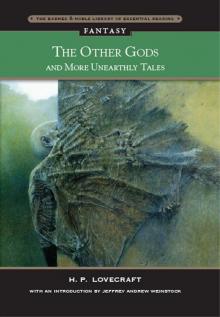 Other Gods and More Unearthly Tales
Other Gods and More Unearthly Tales Lovecraft's Fiction Volume I, 1905-1925
Lovecraft's Fiction Volume I, 1905-1925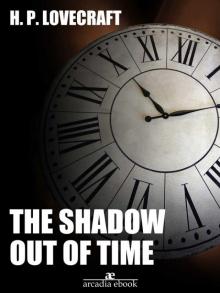 The Shadow Out of Time
The Shadow Out of Time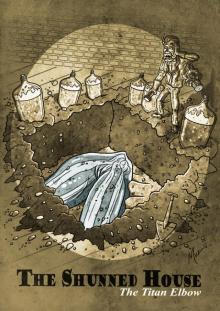 The Shunned House
The Shunned House Lovecraft's Fiction Volume II, 1926-1928
Lovecraft's Fiction Volume II, 1926-1928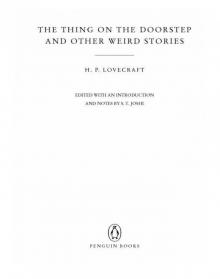 The Thing on the Doorstep and Other Weird Stories
The Thing on the Doorstep and Other Weird Stories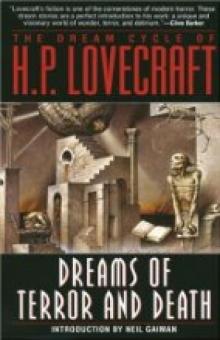 Dream Cycle of H. P. Lovecraft: Dreams of Terror and Death
Dream Cycle of H. P. Lovecraft: Dreams of Terror and Death Great Tales of Horror
Great Tales of Horror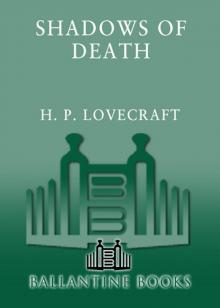 Shadows of Death
Shadows of Death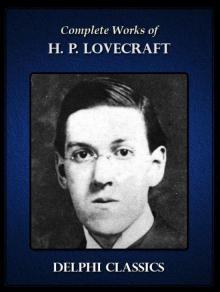 Delphi Complete Works of H. P. Lovecraft (Illustrated)
Delphi Complete Works of H. P. Lovecraft (Illustrated)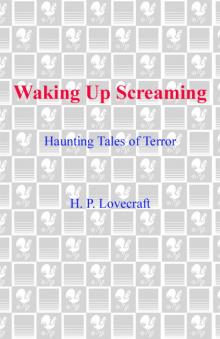 Waking Up Screaming: Haunting Tales of Terror
Waking Up Screaming: Haunting Tales of Terror H.P. Lovecraft Goes to the Movies
H.P. Lovecraft Goes to the Movies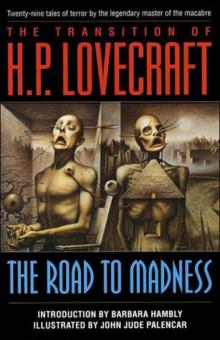 The Road to Madness
The Road to Madness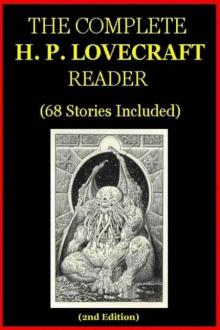 The Complete H.P. Lovecraft Reader (68 Stories)
The Complete H.P. Lovecraft Reader (68 Stories)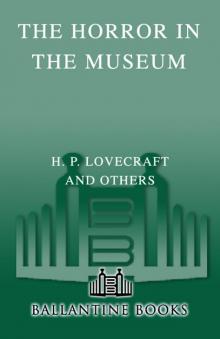 The Horror in the Museum
The Horror in the Museum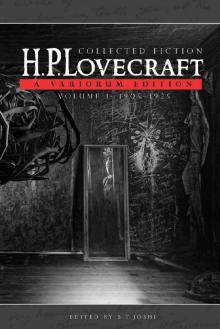 Collected Fiction Volume 1 (1905-1925): A Variorum Edition
Collected Fiction Volume 1 (1905-1925): A Variorum Edition Lovecrafts_Fiction, vol.I_1905-1925
Lovecrafts_Fiction, vol.I_1905-1925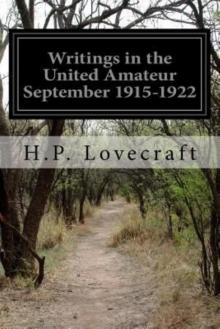 Writings in the United Amateur, 1915-1922
Writings in the United Amateur, 1915-1922 H.P. Lovecraft: The Complete Works
H.P. Lovecraft: The Complete Works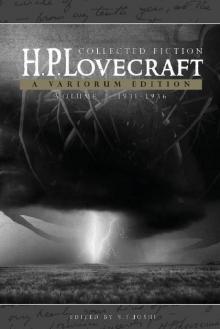 Collected Fiction Volume 3 (1931-1936): A Variorum Edition
Collected Fiction Volume 3 (1931-1936): A Variorum Edition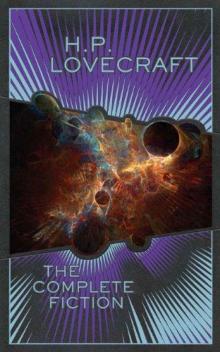 H.P. Lovecraft: The Complete Fiction
H.P. Lovecraft: The Complete Fiction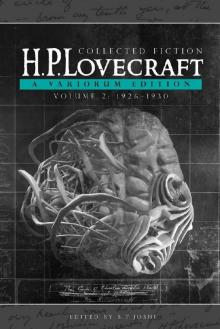 Collected Fiction Volume 2 (1926-1930): A Variorum Edition
Collected Fiction Volume 2 (1926-1930): A Variorum Edition Yog Sothothery - The Definitive H.P. Lovecraft Anthology
Yog Sothothery - The Definitive H.P. Lovecraft Anthology The Complete H.P. Lovecraft Collection (Xist Classics)
The Complete H.P. Lovecraft Collection (Xist Classics)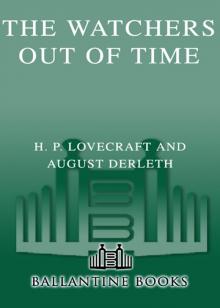 The Watchers Out of Time
The Watchers Out of Time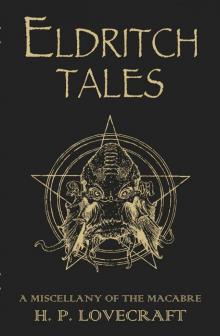 Eldritch Tales
Eldritch Tales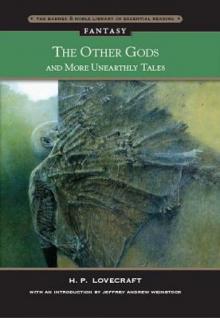 The Other Gods And More Unearthly Tales
The Other Gods And More Unearthly Tales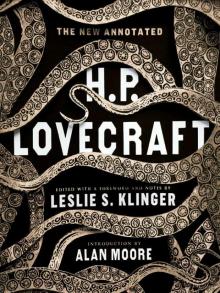 The New Annotated H. P. Lovecraft
The New Annotated H. P. Lovecraft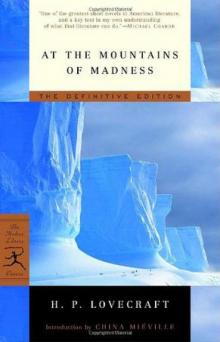 At the mountains of madness
At the mountains of madness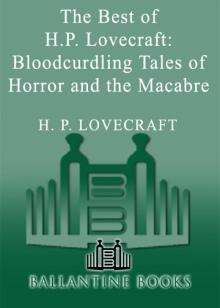 Bloodcurdling Tales of Horror and the Macabre
Bloodcurdling Tales of Horror and the Macabre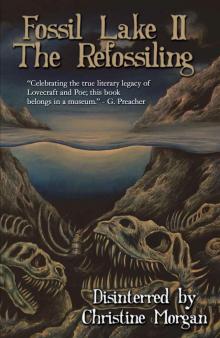 Fossil Lake II: The Refossiling
Fossil Lake II: The Refossiling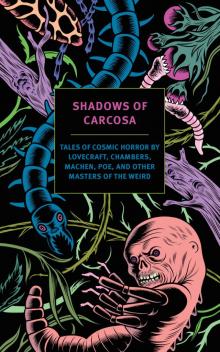 Shadows of Carcosa: Tales of Cosmic Horror by Lovecraft, Chambers, Machen, Poe, and Other Masters of the Weird
Shadows of Carcosa: Tales of Cosmic Horror by Lovecraft, Chambers, Machen, Poe, and Other Masters of the Weird H. P. Lovecraft
H. P. Lovecraft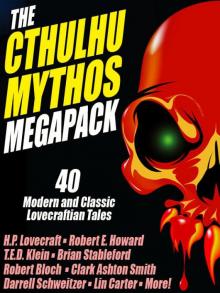 The Cthulhu Mythos Megapack
The Cthulhu Mythos Megapack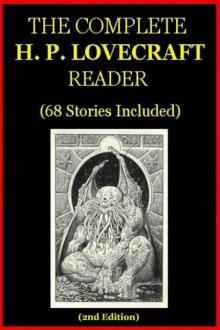 The Complete H. P. Lovecraft Reader (2nd Edition)
The Complete H. P. Lovecraft Reader (2nd Edition)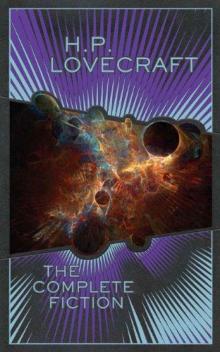 The Complete Fiction
The Complete Fiction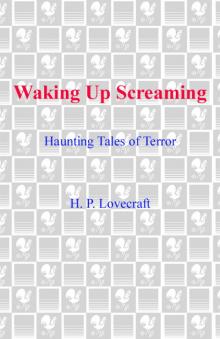 Waking Up Screaming
Waking Up Screaming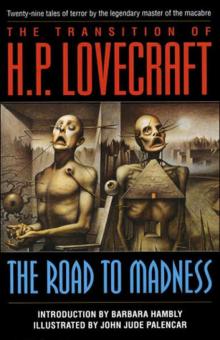 Transition of H. P. Lovecraft
Transition of H. P. Lovecraft![[1935] The Shadow Out of Time Read online](http://i1.bookreadfree.com/i2/04/12/1935_the_shadow_out_of_time_preview.jpg) [1935] The Shadow Out of Time
[1935] The Shadow Out of Time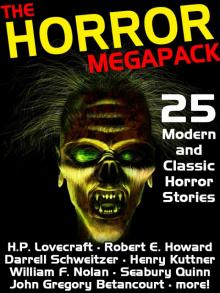 The Horror Megapack
The Horror Megapack